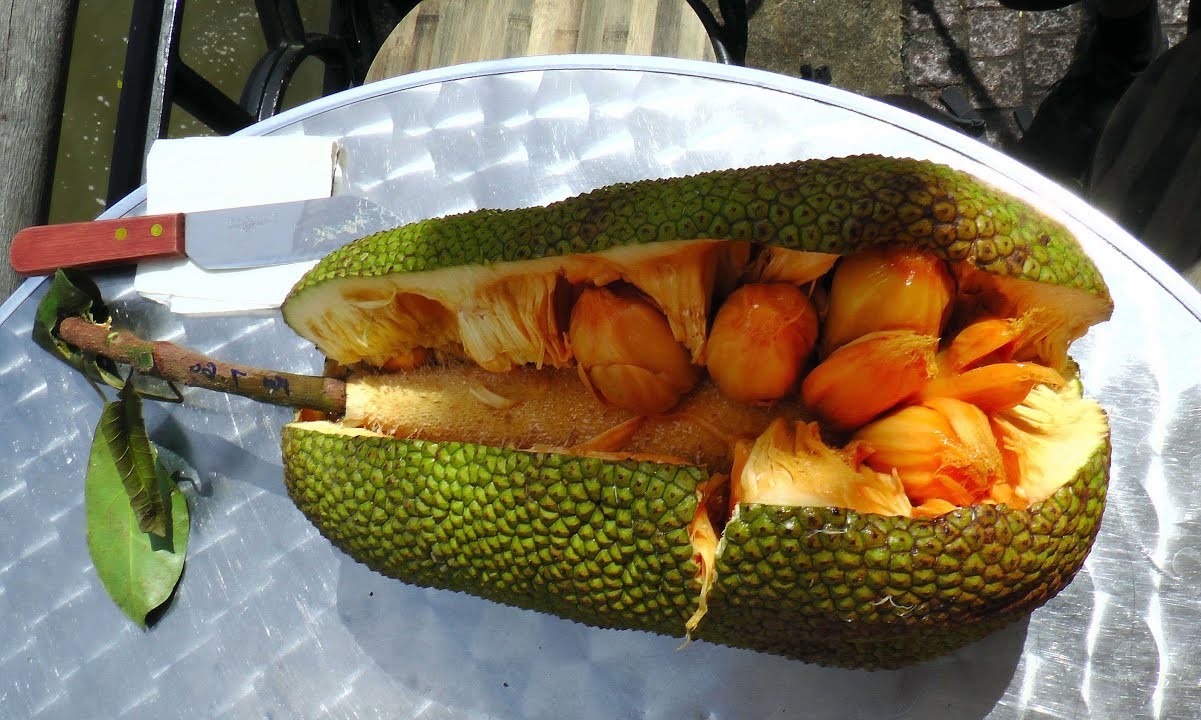
Chempedak, a tropical fruit native to Southeast Asia, often gets overshadowed by its more famous cousin, the jackfruit. But this unique fruit deserves its own spotlight. What makes chempedak special? Its sweet, custard-like flesh and distinctive aroma captivate those who try it. Packed with nutrients, chempedak offers a range of health benefits, from boosting immunity to aiding digestion. Its versatility in culinary uses, from desserts to savory dishes, adds to its charm. Whether you're a fruit enthusiast or just curious, learning about chempedak can open up a whole new world of flavors and experiences. Ready to dive into 35 fascinating facts about this exotic fruit? Let's get started!
What is Chempedak?
Chempedak, also known as cempedak, is a tropical fruit native to Southeast Asia. It belongs to the Moraceae family, which also includes jackfruit and breadfruit. This fruit is cherished for its unique taste and texture.
- Chempedak is closely related to jackfruit, sharing a similar appearance and structure.
- The fruit is elongated, typically measuring 20-45 cm in length.
- Its skin is greenish-yellow when ripe, covered in small, hexagonal bumps.
- Inside, chempedak contains numerous seeds surrounded by a sweet, creamy flesh.
- The flesh has a strong, distinctive aroma that some people compare to durian.
Nutritional Benefits of Chempedak
Chempedak is not just delicious; it's also packed with nutrients that can benefit your health. Here are some nutritional facts about this exotic fruit.
- Chempedak is rich in vitamin C, which helps boost the immune system.
- It contains dietary fiber, aiding in digestion and preventing constipation.
- The fruit is a good source of potassium, essential for heart health.
- It also provides vitamin A, which is important for vision and skin health.
- Chempedak has antioxidants that help fight free radicals in the body.
Culinary Uses of Chempedak
Chempedak is versatile in the kitchen, used in various dishes and culinary traditions. Here are some ways this fruit is enjoyed.
- In Malaysia, chempedak is often deep-fried in batter, creating a crispy snack.
- The flesh can be eaten raw, enjoyed for its sweet and creamy texture.
- Chempedak seeds are edible when cooked, often boiled or roasted.
- The fruit is sometimes used in desserts, like chempedak ice cream or cakes.
- In some regions, chempedak is fermented to make a traditional dish called "tempoyak."
Growing and Harvesting Chempedak
Chempedak trees are cultivated in tropical climates, requiring specific conditions to thrive. Here are some interesting facts about growing and harvesting this fruit.
- Chempedak trees can grow up to 20 meters tall.
- They prefer well-drained soil and plenty of sunlight.
- The trees start bearing fruit after 3-5 years of planting.
- Harvesting is usually done by hand, using long poles to reach the high branches.
- The fruit is typically harvested when it starts to emit a strong fragrance, indicating ripeness.
Cultural Significance of Chempedak
Chempedak holds a special place in the cultures of Southeast Asia, often featured in festivals and traditional practices. Here are some cultural aspects of this fruit.
- In Malaysia and Indonesia, chempedak is a popular fruit during the festive season.
- It is often given as a gift during celebrations and family gatherings.
- Chempedak is featured in traditional folklore and stories, symbolizing abundance and prosperity.
- The fruit is sometimes used in traditional medicine, believed to have healing properties.
- In some cultures, the wood of the chempedak tree is used to make musical instruments.
Environmental Impact of Chempedak Cultivation
Growing chempedak can have both positive and negative impacts on the environment. Here are some facts about its environmental footprint.
- Chempedak trees help in maintaining soil fertility by preventing erosion.
- They provide habitat and food for various wildlife species.
- However, large-scale cultivation can lead to deforestation and loss of biodiversity.
- Sustainable farming practices are essential to minimize environmental damage.
- Agroforestry, where chempedak is grown alongside other crops, can enhance biodiversity and soil health.
Fun Facts About Chempedak
Chempedak is full of surprises, with many fun and quirky facts that make it even more interesting. Here are some fun tidbits about this tropical fruit.
- Chempedak is sometimes called the "poor man's jackfruit" due to its smaller size and lower cost.
- The fruit's strong aroma can be detected from a considerable distance.
- Chempedak flesh can be used to make a natural dye.
- The fruit is believed to have aphrodisiac properties in some cultures.
- Chempedak is often confused with jackfruit, but once tasted, its unique flavor is unforgettable.
Final Thoughts on Chempedak
Chempedak is more than just a tropical fruit. Packed with nutrients, it offers a unique taste and numerous health benefits. From its antioxidant properties to its digestive benefits, chempedak is a powerhouse of goodness. Its versatility in culinary uses makes it a favorite in many Southeast Asian dishes. Whether eaten raw, fried, or added to desserts, chempedak never disappoints.
Learning about its cultural significance and economic impact adds another layer of appreciation. This fruit isn't just food; it's a part of traditions and livelihoods. Next time you come across chempedak, give it a try. You might find a new favorite snack and a conversation starter.
So, next time you see this spiky fruit, remember it's not just about taste. It's about history, culture, and health all wrapped in one.
Was this page helpful?
Our commitment to delivering trustworthy and engaging content is at the heart of what we do. Each fact on our site is contributed by real users like you, bringing a wealth of diverse insights and information. To ensure the highest standards of accuracy and reliability, our dedicated editors meticulously review each submission. This process guarantees that the facts we share are not only fascinating but also credible. Trust in our commitment to quality and authenticity as you explore and learn with us.
